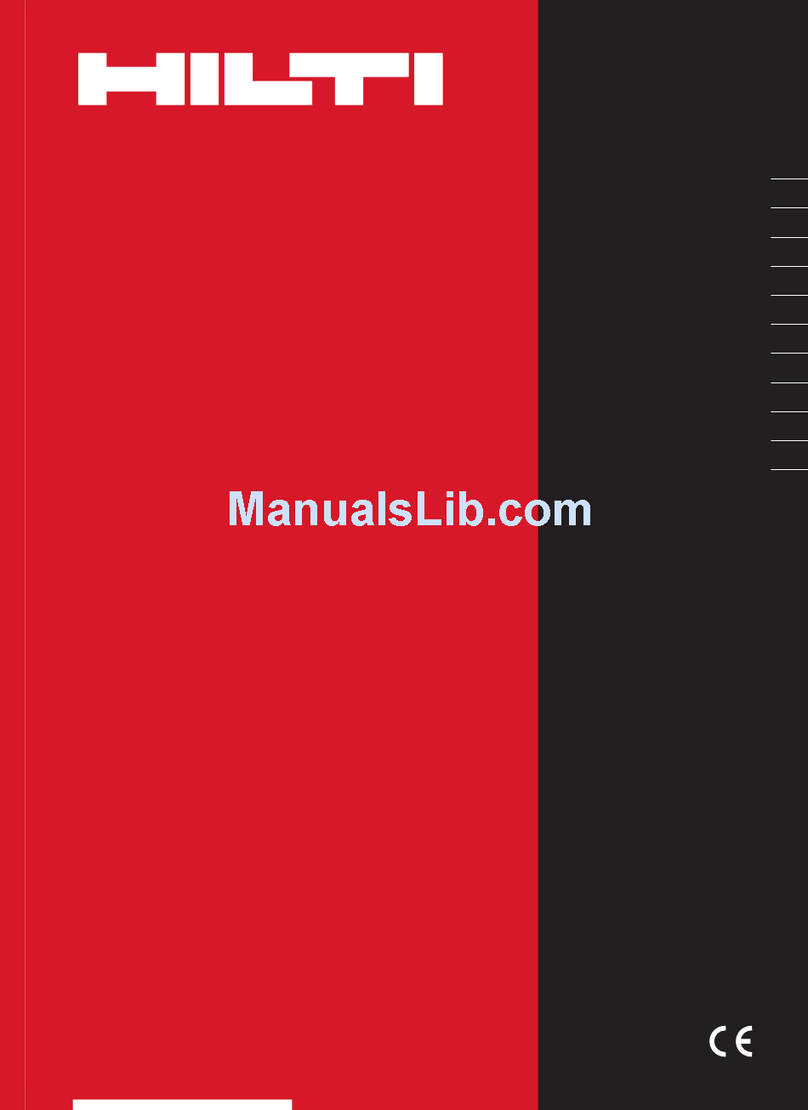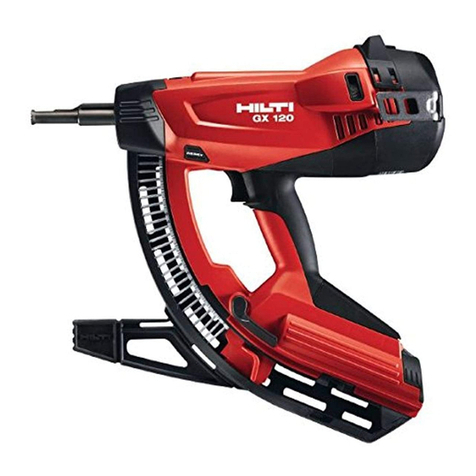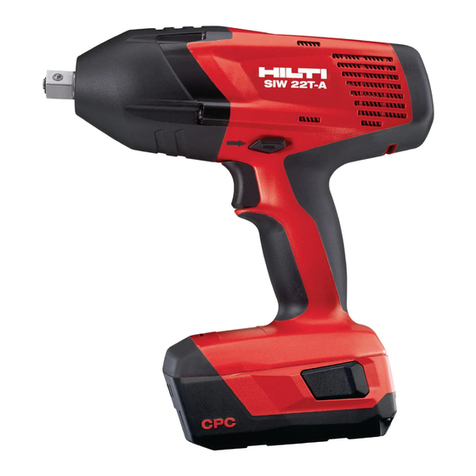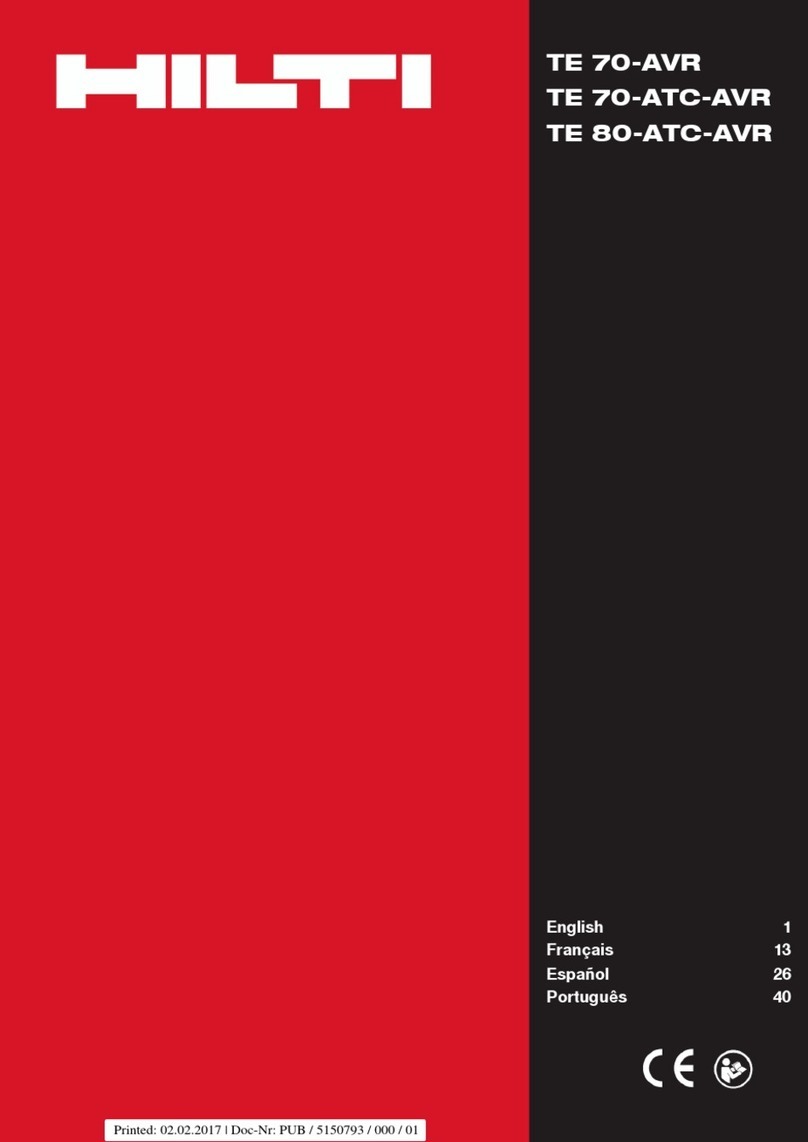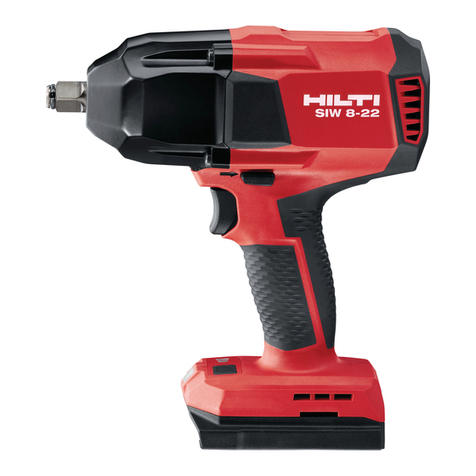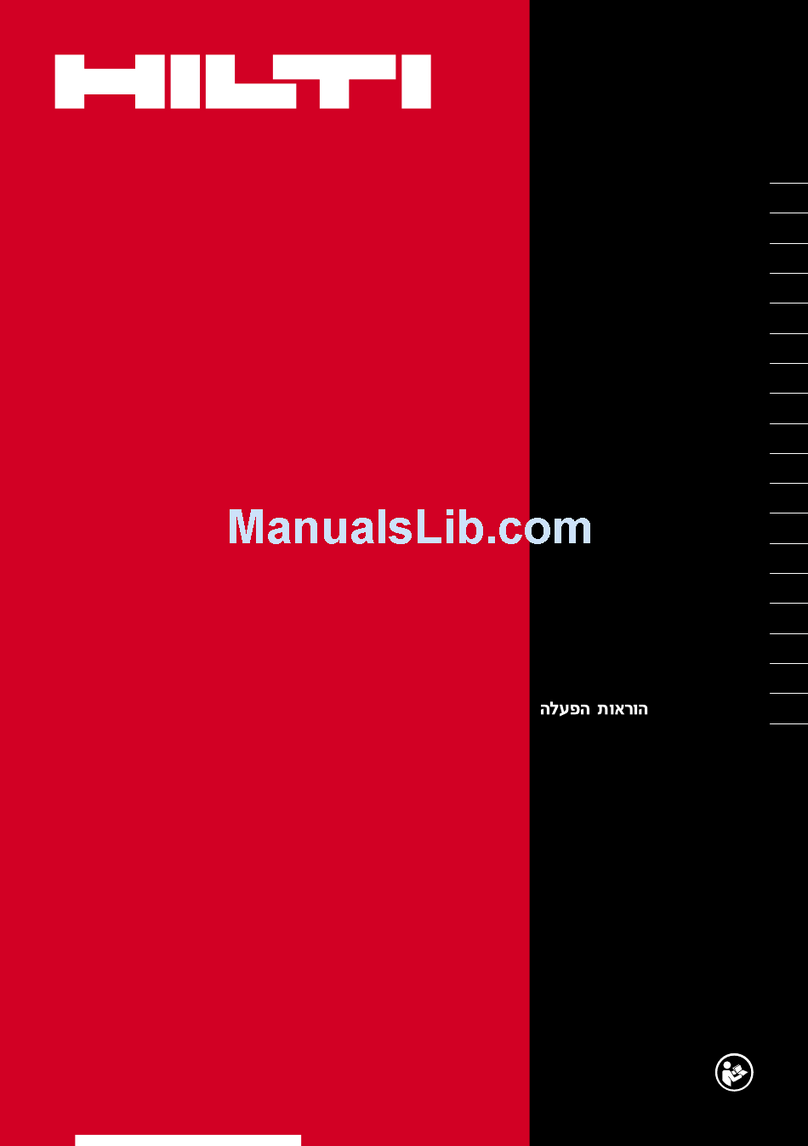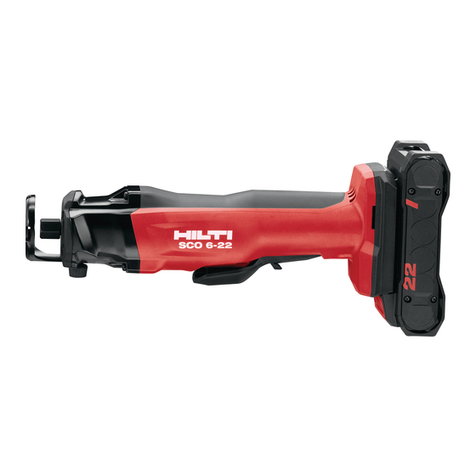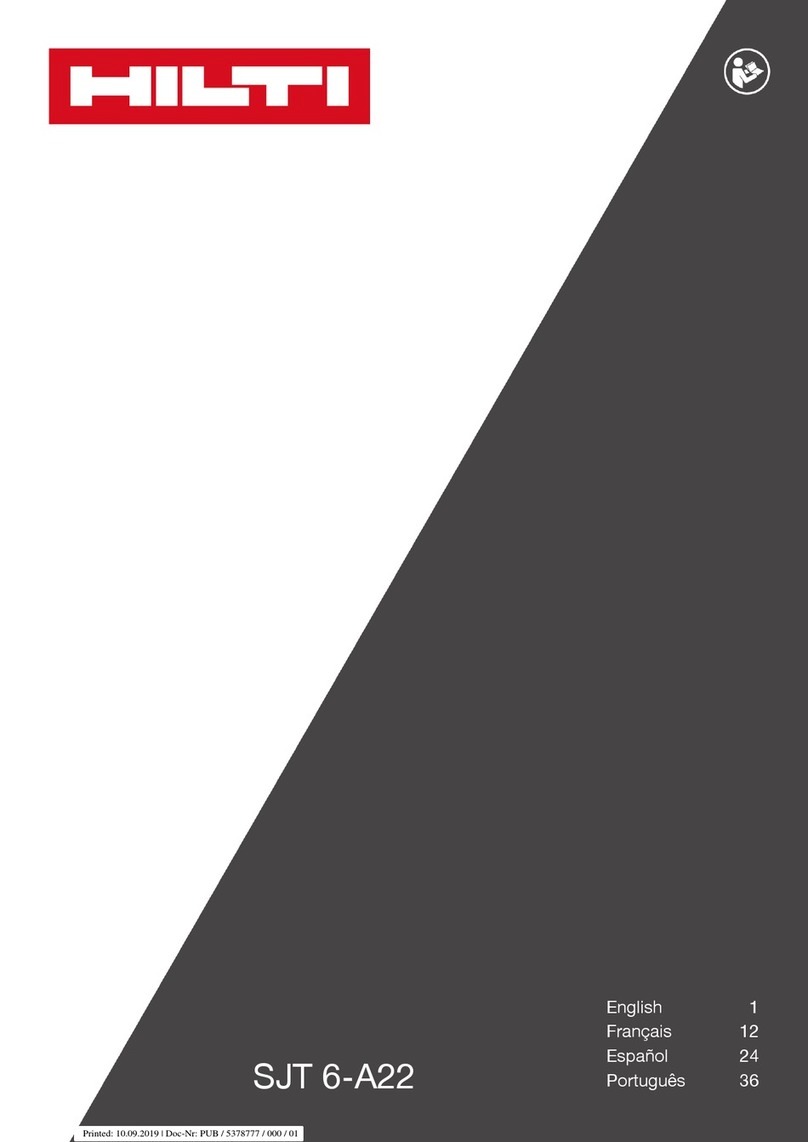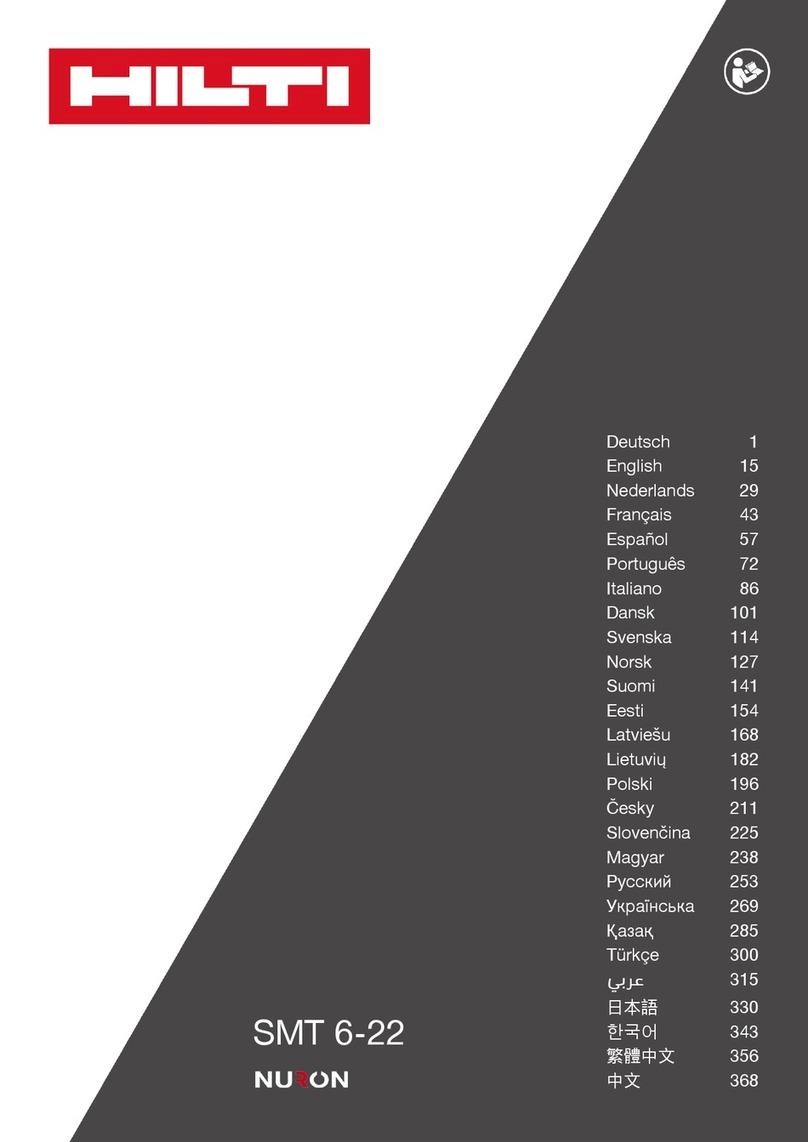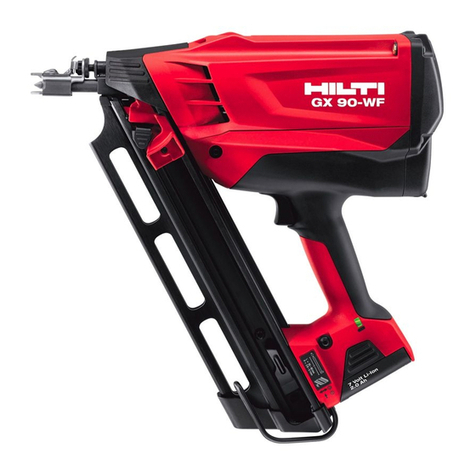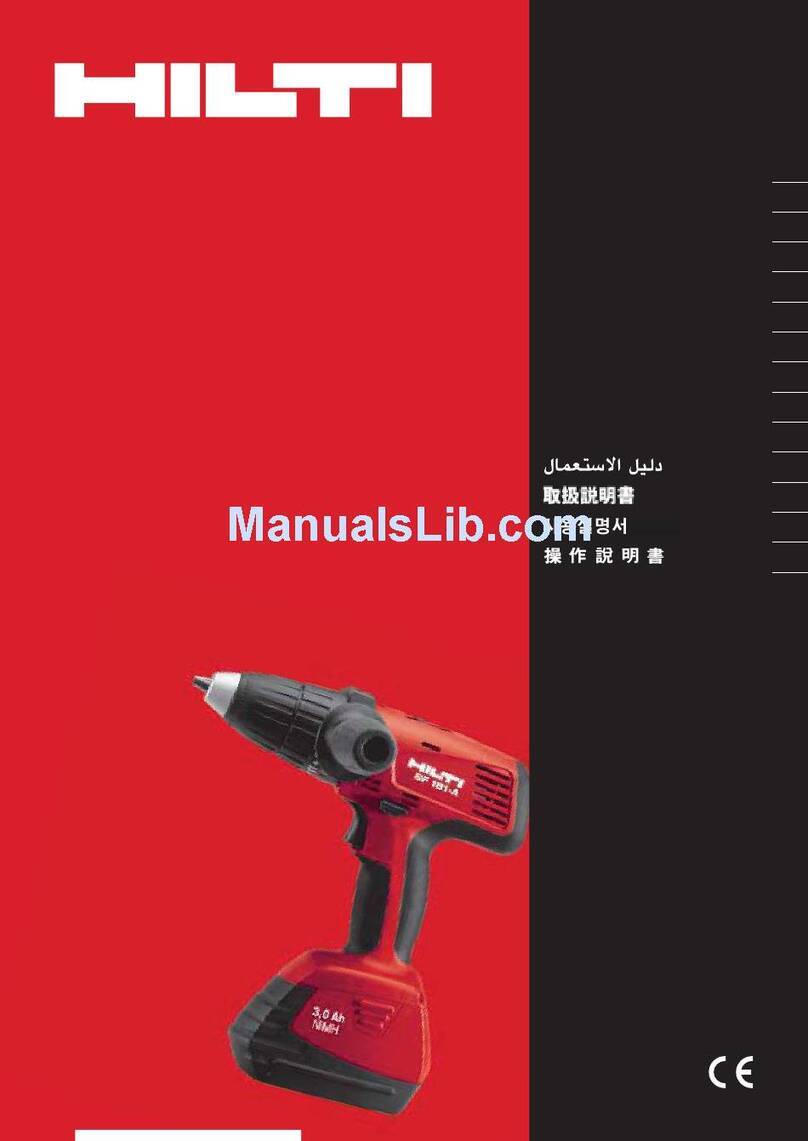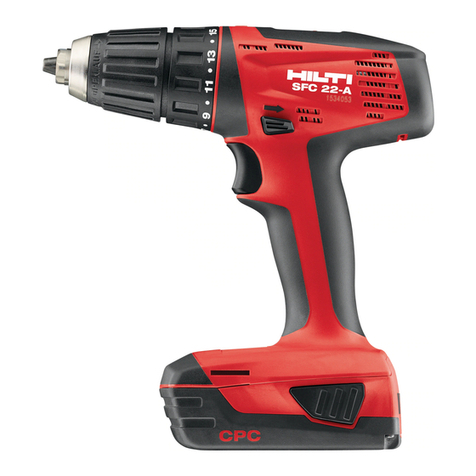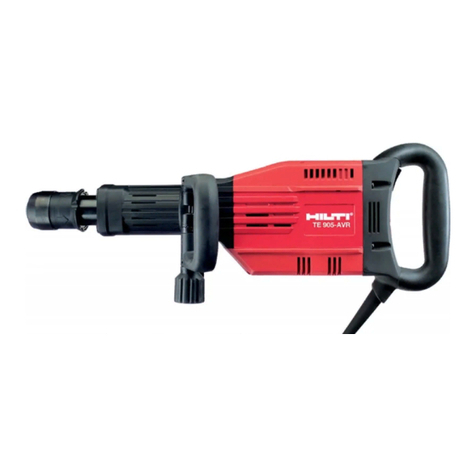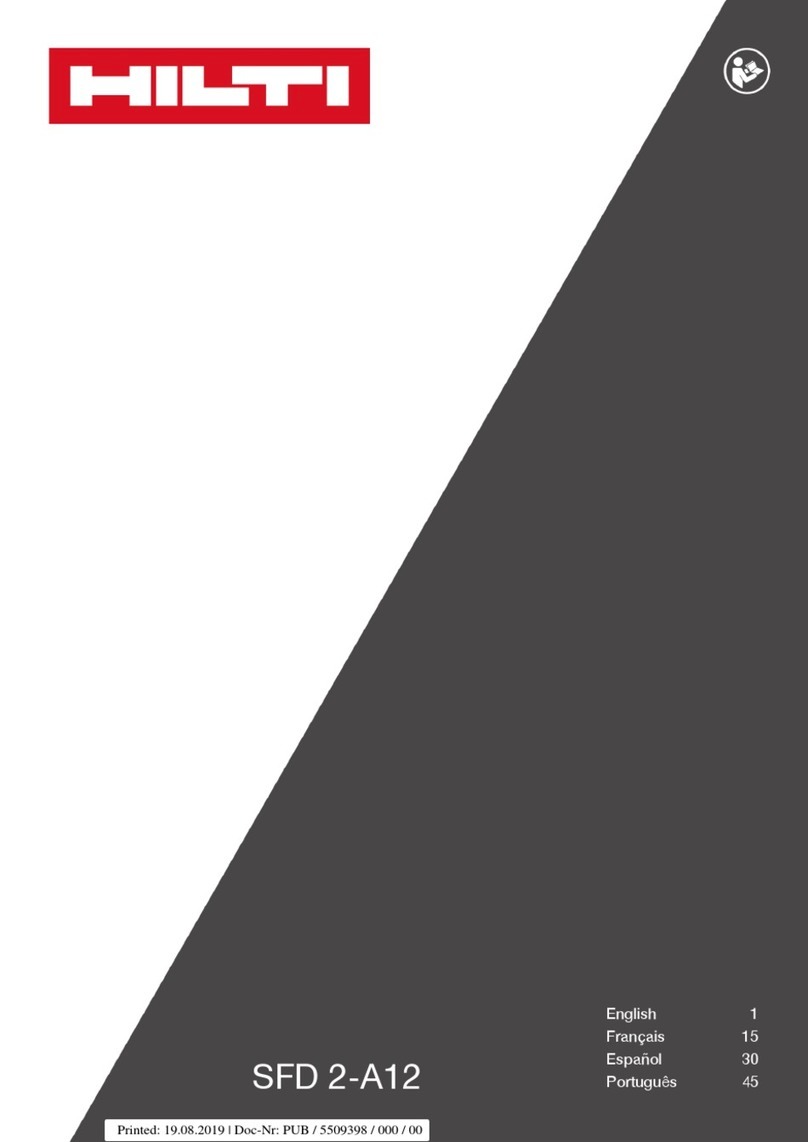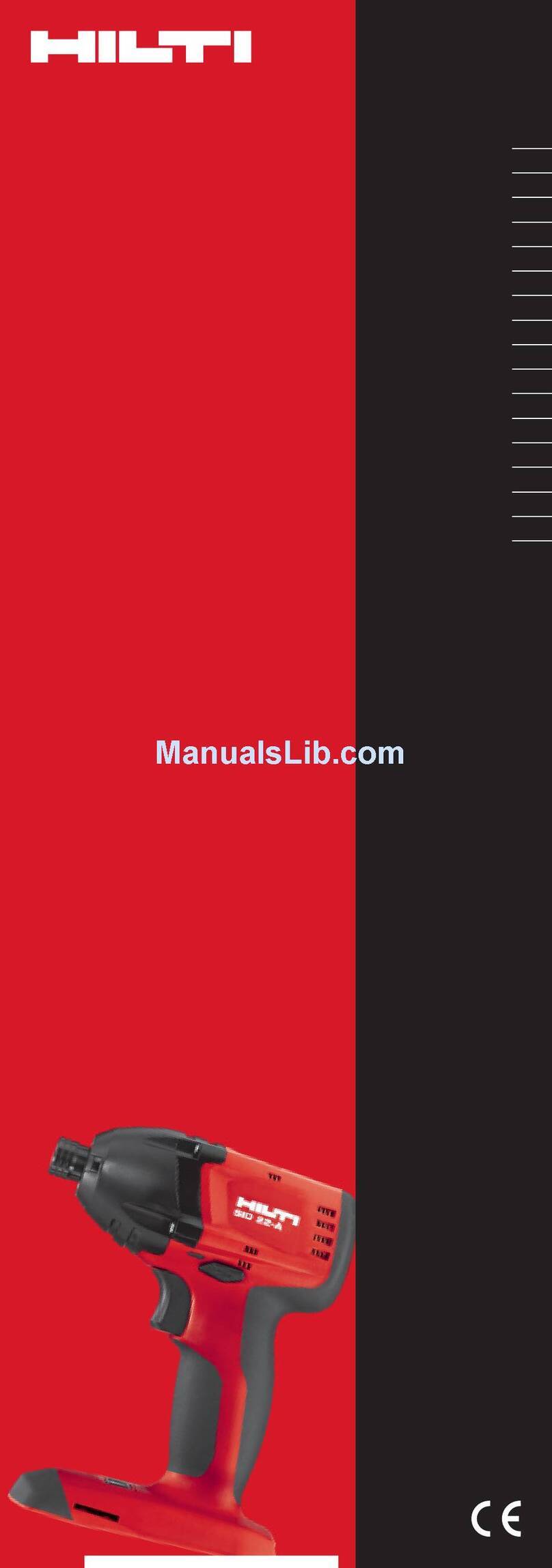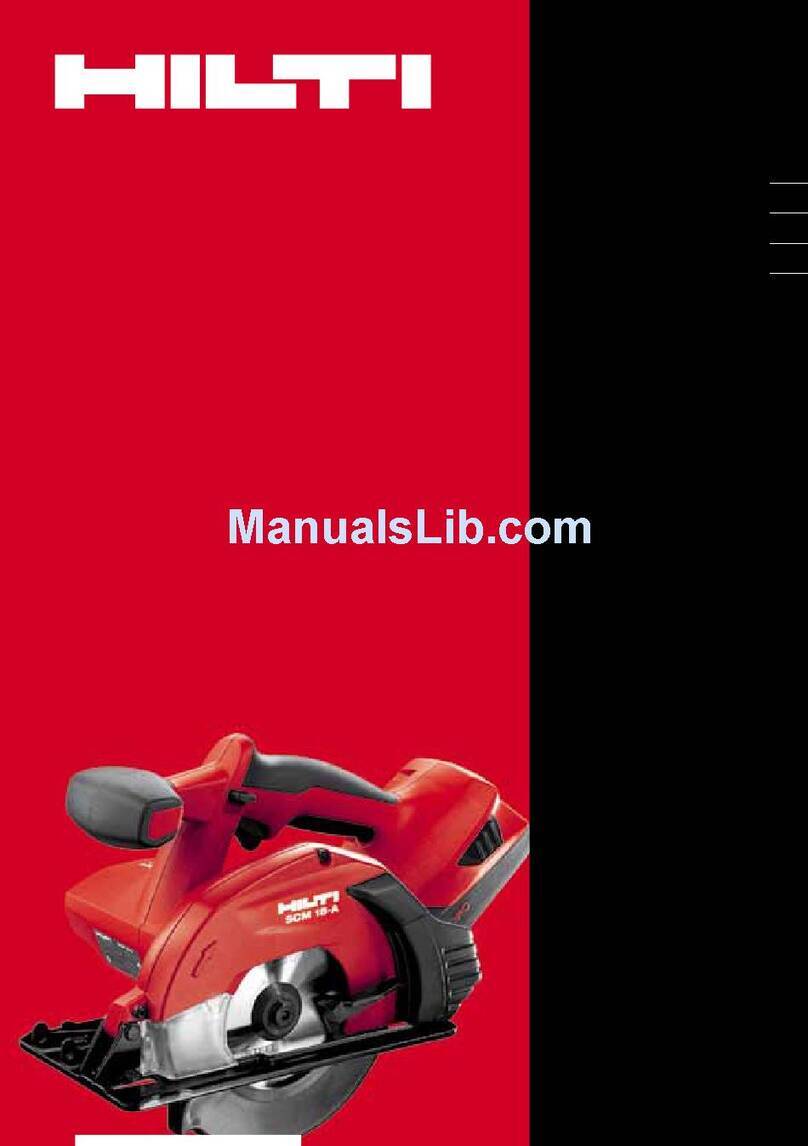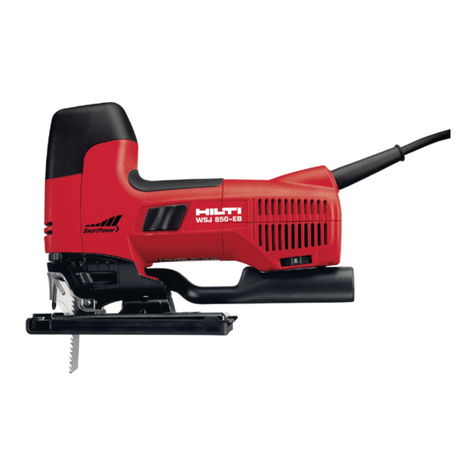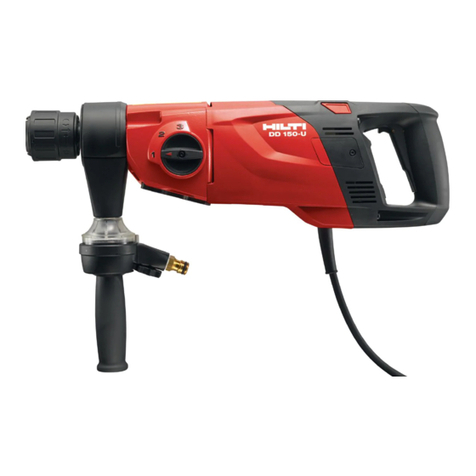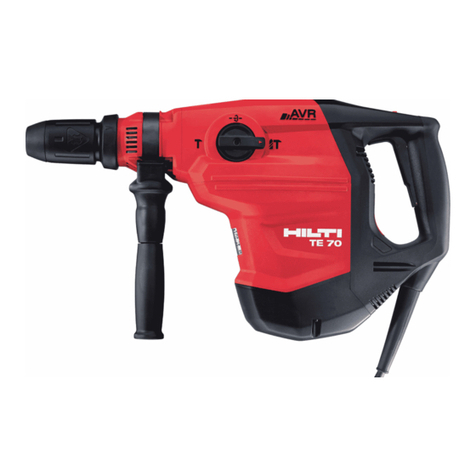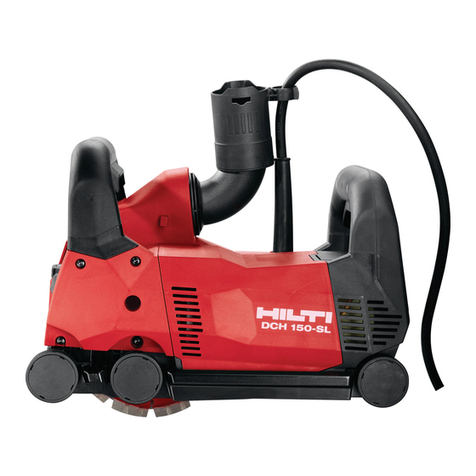
The power tool may be operated only when connected to a power supply providing a voltage and frequency in
compliance with the information given on its type identification plate.
To avoid the risk of injury, use only genuine Hilti accessories and insert tools.
Observe the information printed in the operating instructions concerning operation, care and maintenance.
Modification of the power tool or tampering with its parts is not permissible.
2.2 Chuck
28 mm (1 ¹/₈") hex. chuck
2.3 Switch
On / off switch
2.4 Grips
Grips incorporating AVR Active Vibration Reduction
2.5 Lubrication
Permanent lubrication with separate lubrication chambers for the gearing and hammering mechanism.
2.6 Theft protection system (optional)
The power tool may be equipped with the TPS Theft Protection System as an option. If the power tool is equipped
with this feature, it can be unlocked and made ready for operation only through use of the corresponding TPS key.
2.7 Protective features
Protection from high temperatures is provided by the casing around inner parts of the power tool.
2.8 Indicator LED
Service indicator LED (see section “Care and maintenance”)
Theft protection system indicator (optional) (see section “Operation”)
2.9 Protection against overheating
Thepowertoolisequippedwithaprotectiveoverheatingcut-outthatswitches the power off for a short time.
Overheating is indicated by an LED blinking.
2.10 Items supplied as standard
1 Power tool
1 Operating instructions with pocket for attach-
ment to the transport trolley
1 Transport trolley (optional)
1 Grease
2.11 Using extension cords
Use only extension cords of a type approved for the application and with conductors of adequate cross section.
The power tool may otherwise lose performance and the extension cord may overheat. Check the extension cord for
damage at regular intervals. Replace damaged extension cords.
Recommended minimum conductor cross section and max. cable lengths
Conductor cross section AWG12 AWG10
Mains voltage 110-120 V 75 ft 125 ft
Do not use extension cords with 16 AWG conductor cross section.
2.12 Using extension cords outdoors
When working outdoors, use only extension cords that are approved and correspondingly marked for this application.
en
3
Printed: 08.07.2013 | Doc-Nr: PUB / 5070853 / 000 / 03
